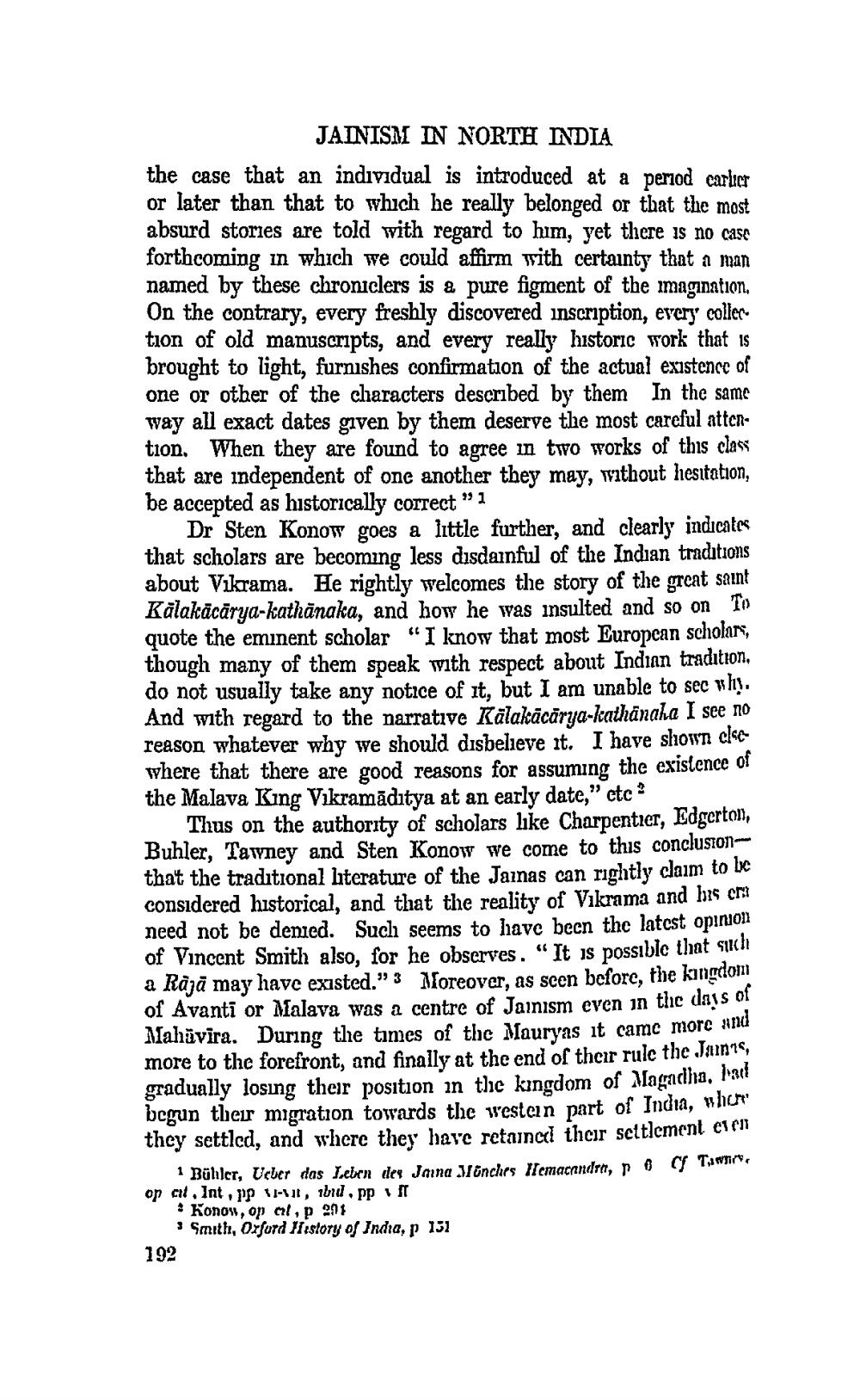________________ JAINISM IN NORTH INDIA the case that an individual is introduced at a period carlier or later than that to which he really belonged or that the most absurd stories are told with regard to him, yet there is no case forthcoming in which we could affirm with certainty that a man named by these chroniclers is a pure figment of the magination, On the contrary, every freshly discovered inscription, every coller tion of old manuscripts, and every really historic work that is brought to light, furnishes confirmation of the actual existence of one or other of the characters described by them in the same way all exact dates given by them deserve the most careful attention. When they are found to agree in two works of this class that are independent of one another they may, without hesitation, be accepted as historically correct "1 Dr Sten Konow goes a little further, and clearly indicates that scholars are becoming less disdainful of the Indian traditions about Vikrama. He rightly welcomes the story of the great saint Kalakacarya-kathanaka, and how he was insulted and so on To quote the eminent scholar "I know that most European scholars, though many of them speak with respect about Indian tradition, do not usually take any notice of it, but I am unable to sec why. And with regard to the narrative Kalakacarya-kathanaka I see no reason whatever why we should disbelieve it. I have shown else where that there are good reasons for assuming the existence of the Malava King Vikramaditya at an early date," ctc ? Thus on the authority of scholars like Charpentier, Edgerton, Buhler, Tawney and Sten Konow we come to this conclusion that the traditional literature of the Jainas can rightly claim to be considered historical, and that the reality of Vikrama and his er need not be denied. Such seems to have been the latest opinion of Vincent Smith also, for he observes. "It is possible that such a Raja may have existed." 3 Moreover, as seen before, the kingdom of Avanti or Malava was a centre of Jainism even in the days of Mahavira. During the times of the Mauryas it came more such more to the forefront, and finally at the end of their rule the Jamn, gradually losing their position in the kingdom of Magadja, a begun their migration towards the western part of India, which they settled, and where they have retained their settlement en Buhler, Ucher das Lelin der Jana Jonchers Icmacando, O TAI op t. Int. 1P -ul, tbid.ppt konow, or ot, p 201 * Smith, Oxford Trastory of India, P 151 192




